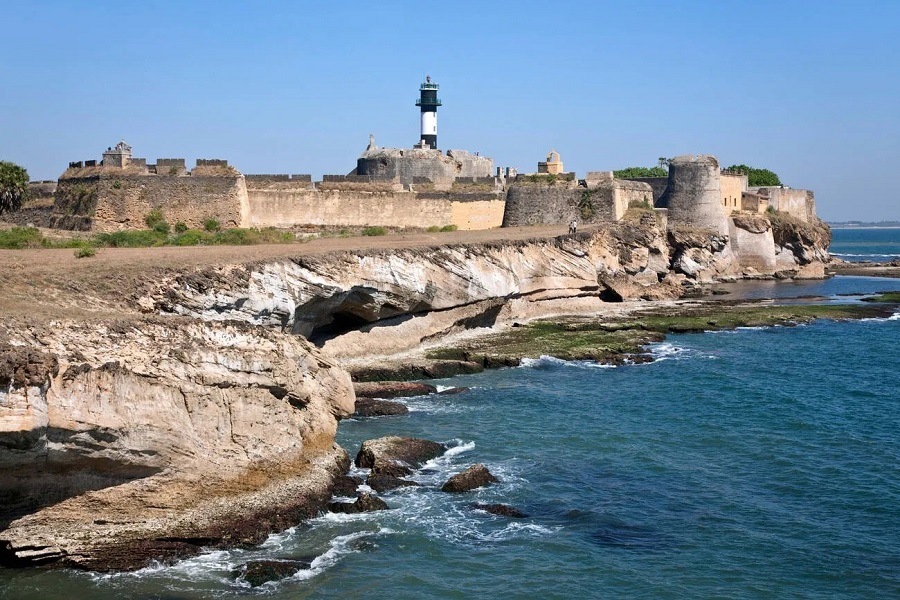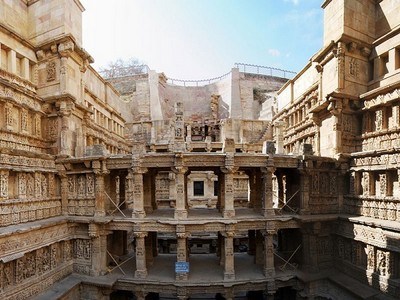DAMAN TOURISM | TOP PLACES TO VISIT, BEACHES & TRAVEL GUIDE TO DAMAN
![]() Heritage |
Heritage | ![]() Beach
Beach
About Daman
 Country: India | State: Daman & Diu
Country: India | State: Daman & Diu
 #100 of 2 Places to visit in Daman & Diu
#100 of 2 Places to visit in Daman & Diu
 Ideal Trip Duration: Not Available
Ideal Trip Duration: Not Available
 Nearest City to Daman: Surat (122 Kms)
Nearest City to Daman: Surat (122 Kms)
 Best Time to Visit Daman: October to February
Best Time to Visit Daman: October to February
 Peak Season: December
Peak Season: December
At a distance of 10 Km from Vapi, 41 Km from Dadra, 122 Km from Surat, 156 Km from Nashik, 188 Km from Mumbai, 267 Km from Vadodara, 307 Km from Pune, and 368 Km from Ahmedabad, Daman is a city and the administrative capital of the Indian territory of Dadra and Nagar Haveli and Daman and Diu. Located a little northward towards the state of Gujarat, this beautiful little city lie along the western coast of India. It is one of the popular tourist destinations in India, and among the must include places in the Gujarat tour packages.
Encircled by the states of Gujarat, Maharashtra, and the Arabian Sea, Daman is often considered as one of the scenic places to visit near Mumbai. The term 'Daman' is derived from the Daman Ganga River, which separates Daman into Nani-Daman (Little Daman) and Moti-Daman (Big Daman). Contrary to what its name suggests, Nani-Daman is the larger section, while the historical city predominantly resides in Moti-Daman. This area houses most of the significant establishments, including major hospitals, supermarkets, and key residential neighborhoods. Daman and Diu have a substantial population of both Gujaratis and Maharashtrians due to their close proximity to these two states.
Daman has a rich history of governance by various dynasties and nations. From the 2nd century BC to the 13th century AD, Daman was included in the Lata region, one of the seven divisions of Aparant or Konkan Vishaya. Archaeological findings indicate that Daman was once part of the Mauryan Empire. Subsequently, it came under the rule of the Satavahanas, Kshaharatas, and Abhiras. The Traikutakas, Vakataka, and Kalachuris also exercised control over Daman before it fell into the hands of the Chalukyas of Badami. In the 13th century, Daman became incorporated into the Ramnagar state and later served as a tributary to the Gujarat Sultanate.
In the 16th century, the Portuguese took possession of Daman, initially making an attempt to seize it in 1531 and ultimately succeeding in 1559 through a treaty with the Shah of Gujarat. They established Daman as a significant trading post, especially for the opium trade with China. Even after India gained independence in 1947, Daman continued to be governed by Portuguese authorities until 1961. In December 1961, Indian forces liberated Daman, along with Diu and Goa, and it subsequently became part of the union territory of Goa, Daman and Diu. In 1987, Goa was designated as a state, while Daman and Diu were established as a separate union territory. In 2020, Daman and Diu were merged with Dadra and Nagar Haveli to create the current union territory.
The union territory of Daman is picturesque, serene, and remains relatively untouched. Whether you prefer exploring forts, relaxing by the ocean, or visiting ancient temples, Daman offers numerous attractions that reveal the vibrant tapestry of this city through their distinct allure.Jampore Beach, Lighthouse, Devka Beach, Moti Daman Fort, Somnath Mahadev Temple, Church Of Our Lady Of Sea, Mirasol Lake Garden, among others, are some of the well-known places to visit in Daman. Furthermore, the nightlife in Daman is invigorated by the presence of numerous bars, distributed across the area and providing a wide selection of alcoholic beverages at affordable prices. Many bars operate around the clock, serving as a social venue at any hour of the day or night. Additionally, Daman features several dance bars that draw significant crowds of both tourists and locals.
Daman is well-known for its lively festivals that merge local customs with Portuguese heritage. Among the well-known festivals are the Kite Festival, Garba, and Nariyal Purnima. Furthermore, Daman joyfully observes Christmas and Diwali. The DNH & DD Monsoon Festival is a recent addition, typically takes place in August. This festival showcases cultural activities, dance performances, handicraft stalls, and events such as a marathon, cyclothon, etc.
About 132 km from Daman, Surat Airport serves as the closest airport, and is offering well-established flight connections from Mumbai. From the airport, travelers can easily hire a taxi to reach Daman. The nearest railway station, situated about 10 km from Daman, is located in Vapi, which is efficiently connected by train services to cities such as Rajkot, Porbandar, Hyderabad, Aurangabad, Solapur, Jaipur, Pune, Mumbai, Bikaner, and Okha. Daman is also conveniently accessible by road via National Highway 48 (NH48), which connects it to significant urban centers including Vapi, Dadra, Mumbai, and Surat.
The best time to explore Daman is between October and March, as the climate is enjoyable and cool, which is perfect for sightseeing and engaging in outdoor activities. More specifically, the peak season occurs from October to February, whereas March and April provide moderate weather conditions. As a coastal town, Daman has a tropical climate characterized by mild winters and oppressive summers. While the monsoon season can be a viable choice, the substantial rainfall in this area may render the journey somewhat inconvenient.
None

























